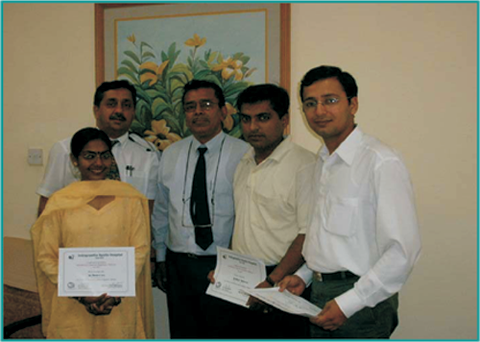

Compressed-air work is an old technology (1850) that was used to prevent flooding of shafts or tunnels under construction. Until the 1980s, the workers were digging shafts to sink caissons or tunnels while under pressure, working in long shifts. These workers have been called compressed-air workers, caisson workers, or “tubistes” in French.
During the early 1980s in Europe, tunnel boring machines (TBMs) came of age. With the use of these machines, no more digging under pressure is required. However, the cutter head tools wear out, have to be inspected and, from time to time, need replacement or repair. Qualified technicians who can be compressed via an airlock system are sometimes called to perform those tasks when they cannot be performed at atmospheric pressure. These caisson workers are known to have a risk of dysbaric osteonecrosis and decompression sickness (DCS) which tends to be underreported. Permanent damage in the form of central nervous system or brain damage may occur in compressed air tunnel workers, as seen on magnetic resonance imaging. Oxygen decompression appears to be the only viable method for safely decompressing tunnel workers.
Offshore deep diving techniques that was already available since the early 1970s had to be adapted to TBM work. Basically, bounce deep diving technology as well as deep saturation diving have already been used in tunnelling or caisson sinking.

These caisson workers are known to have a risk of dysbaric osteonecrosis and decompression sickness (DCS) which tends to be underreported. Permanent damage in the form of central nervous system or brain damage may occur in compressed air tunnel workers, as seen on magnetic resonance imaging. Oxygen decompression appears to be the only viable method for safely decompressing tunnel workers.
Medical support has been provided to the Delhi Metro project by Dr Tarun Sahni and team. Some of the areas where medical inputs were provided are as follows:
Assess fitness of
Staff required to enter the compressed air environment
Medical Evacuation
Establish communications for effective and timely treatment of workplace injuries
Appropriate retrieval and hospital facilities required
Provide
worker training and education
lock operator training and education
emergency medical cover during tunnelling operations
treatment of compression-related problems
Assess fitness of
medical advice to workers, management and
appropriate compression/decompression practices
specific occupational health risk management